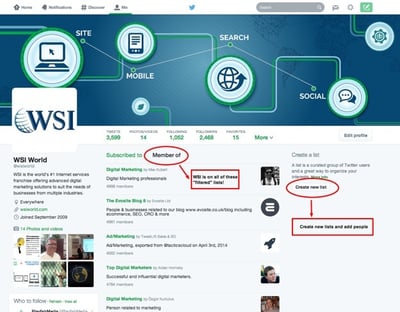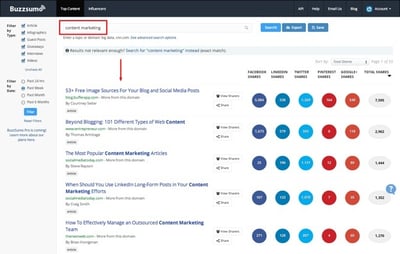Are you worried or discouraged by all this talk of content shock? There's a good chance you are, especially if your business jumped aboard the content marketing train in 2013; the last thing you want to hear is that there's more content in existence than humanity can possibly consume. However, if you're thinking some of this sounds a little dramatic, we would agree.

Content shock just sounds like another way to say information overload. Not only is information overload a prediction that's failed to occur multiple times over (kind of like the end of the world!), but it's also something that research confirms is not true, as outlined by Shel Holtz in his brilliant rebuttal of the concept of content shock. People will continue to make arguments for and against content shock, but that's the nature of our Internet. The fact remains that when content marketing doesn't work how it's supposed to, it's due to poor execution or a common misconception, not newly minted contrarian buzzwords.
If there's a silver lining in all of this paranoia and naysaying, it's that it never hurts to strive for excellence. A little bit of fear in the face of failure often leads to significantly improved results. With that in mind, here are some savvy tips to re-enforce your content marketing against fierce competition, content shock, information overload, and whatever else you can think of - real or imagined.
Assume You're Being Filtered (And Use It To Your Advantage)
One of the most salient observations Holtz makes in his piece is that "To read the [content shock] prediction, you would think that everybody producing content is trying to reach everybody." Given the amount of time we in the marketing industry spend talking about targeting content and creating customer personas, we know that's absolutely not the case. Sure, some super viral content appeals to most people (cat videos, anyone?) but the vast majority of content has a specific audience in mind. In fact, the nichier the better!

Look, not everybody is going to read your content, and that's okay! Your content, our content, everybody's content - it's all being filtered in one way or another. Remember when you used to grab that one section of the morning paper to read while you were eating cereal on Sunday morning? Whether you pulled out the Sports, Entertainment, or News sections, you were filtering content. Now that everything online is driven by page views and other metrics, the numbers are scrutinized ad nauseam. If you pretend your audience is the only group that exists, you can stop worrying about people who aren't going to read your content no matter what you do.
People on Twitter are learning how to drown out the noise by creating lists and using the new mute button. Lists allow users to tune into specific groups of people, thus cutting down on the rest of Twitter's noise. Be proactive about this by building your own lists, which will encourage the people you are listing to create their own lists and include you.

Filtering is going to be an extremely important factor in content marketing success moving forward, so keep your ear to the ground for more content filtration news and tools. In fact, if you hear something new tweet us @wsiworld because we want to know about it!
Build Better Content, Even If It's Less Often
Burn this phrase into your mind: quality over quantity. When it comes to content, it's not about publishing new stuff every day - it's about publishing better content whenever you do decide you've got something to say. With everybody scrambling for content, marketers, and businesses sometimes forget that Google's crackdown isn't asking us to produce more content, it's forcing us to create better content. Publishing a paragraph a day on your blog isn't going to provide much value to your customers unless it's the best paragraph they're ever going to read (not likely).
Instead of posting about the first thing that pops into your head the day you're supposed to publish content, take some time and actually brainstorm real ideas. Run an industry survey that solicits answers from your customers and even competitors. Get creative with Vine. Do something a little bit different or take a risk with a new kind of content. All of these things are better than pushing out a 300-word blog post every day just because you think you have to; you don't - quality beats quantity every time, both now and in the future.
Curate When You Can't Create (And Even When You Can!)
Sometimes, you just won't have time for a big content project. That's when you can either outsource or fill the silence on your social airwaves with other great content from within your industry. You never want to go a month without publishing something of your own, but if you only have time to create content once a week, you should spend all the other days directing your audience to helpful content. Yes, even though it doesn't send them back to your website. You are still the one who notified them of a helpful article, so they'll see you as a confident expert for doing so.
Luckily, there are some great tools for content curation that significantly cut down on the time it'll take you to provide your audience with a few quick links. The best of these tools is BuzzSumo, an app that helps you locate the most-shared content on either a specific domain or topic. Here's a screenshot of a search for the top articles on "content marketing" in the last week:

And there they are, a whole bushel of content marketing articles that have been shared over a thousand times across social networks. You'll still want to read an article before you share it, but chances are the ones at the top are going to be pretty good. BuzzSumo is a great little tool not only for content curation but also for your own learning purposes. Even when you're publishing your own content, you can always use BuzzSumo to find content that supports your ideas or findings (as we've done in this post).
These are just a few methods that can help battle the content shock paranoia and turn it into getting a leg up on the competition while they panic. Is there anything your business is doing to help move the content needle? Let us know in the comments!






